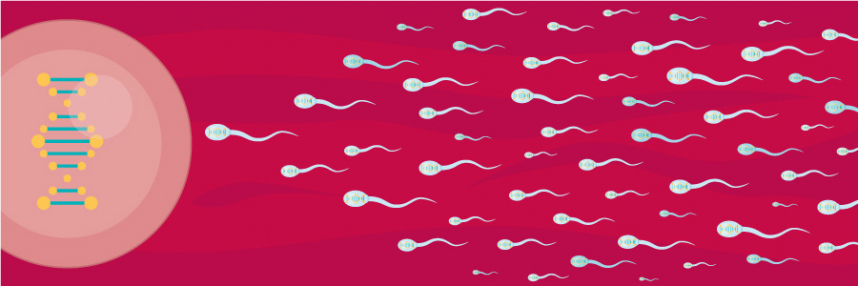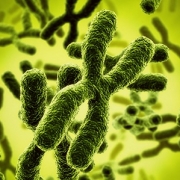Probability, chance and genetic inheritance
When it comes to genetic inheritance from parent to offspring, there isn’t a guaranteed outcome. But there are ways to assess the possible outcomes
Genetic heredity is inherently probabilistic – sexual reproduction ensures that even when we know everything about the parents’ genomes, we don’t know what assortment of their genes will end up in each of their offspring. It can be fun to wonder if a new baby will look more like their mum or dad, but when a genetic condition runs in the family, the unpredictability can be worrying.
We can, however, predict the possible outcomes based on chance. For example, for a couple who are both carriers of the gene variant for a recessive condition, the chance that their child will be affected is 25%. But it does not follow that if they have three healthy children, then the fourth will have the condition. They could have four healthy children, or four who are all affected. The 1-in-4 chance is the same each time, for each child.
Penetrance and probability
Often, the fact that a person carries a gene variant associated with a particular disease does not guarantee that they will be affected.
For example, there is a wealth of evidence linking the BRCA genes to breast and ovarian cancers, but not every woman who carries a pathogenic variant on one of these genes will get cancer in her lifetime. Such genes are said to have incomplete penetrance.
Around 12% of women in the general population will develop breast cancer at some point during their lives, and this goes up to 72% of women with a pathogenic variant in BRCA1 and about 69% of women with a pathogenic BRCA2 variant. So, while the risk is much greater for women with these gene variants, it is by no means certain.
Conversely, many women develop breast cancers every year who do not carry these BRCA variants. In fact, because BRCA and other gene variants associated with breast cancer are comparatively rare, they only account for 5%-10% of all breast cancer diagnoses.
Researchers have identified more than 100 other genes linked to increased risk of breast cancer, but none have effects as significant as the BRCA genes. We also know that environmental and lifestyle factors may affect the risk of developing breast cancer. But even if we had all this information, we still cannot predict whether an individual will develop cancer or not. There will always be rare individuals at high risk who remain unaffected, and individuals at low risk who develop the condition against the odds.
Novel variants
Sometimes a genetic condition can arise with absolutely no warning, when a de novo variant occurs in a gene.
Achondroplasia is the most common form of dwarfism, affecting around one in 25,000 people. It is a genetic condition, resulting from a variant in a gene called FGFR3, and is inherited in an autosomal dominant pattern. It is 100% penetrant, so everyone who has the variant has achondroplasia.
However, around 80% of people with achondroplasia do not inherit the condition from their parents; it is the result of a new variant that arises when the egg or sperm (or their precursor cells) were made. Because this is a random event, there is no way to predict when this will happen.
Supporting the family
Where a genetic condition appears to run in a family, a useful first step is to take a genetic family history (you can learn more about this in our short online course). A referral to clinical genetics may be appropriate, along with access to genetic counselling.
For families who know they carry the gene variant for a genetic disease, options are available when it comes to family planning. Some couples opt for pre-implantation genetic testing (PGD) to select an unaffected embryo. Another option is prenatal testing during pregnancy to find out if their child will be affected, such as amniocentesis or CVS (chorionic villus sampling). Non-invasive tests are also being developed for some single-gene disorders.
–









